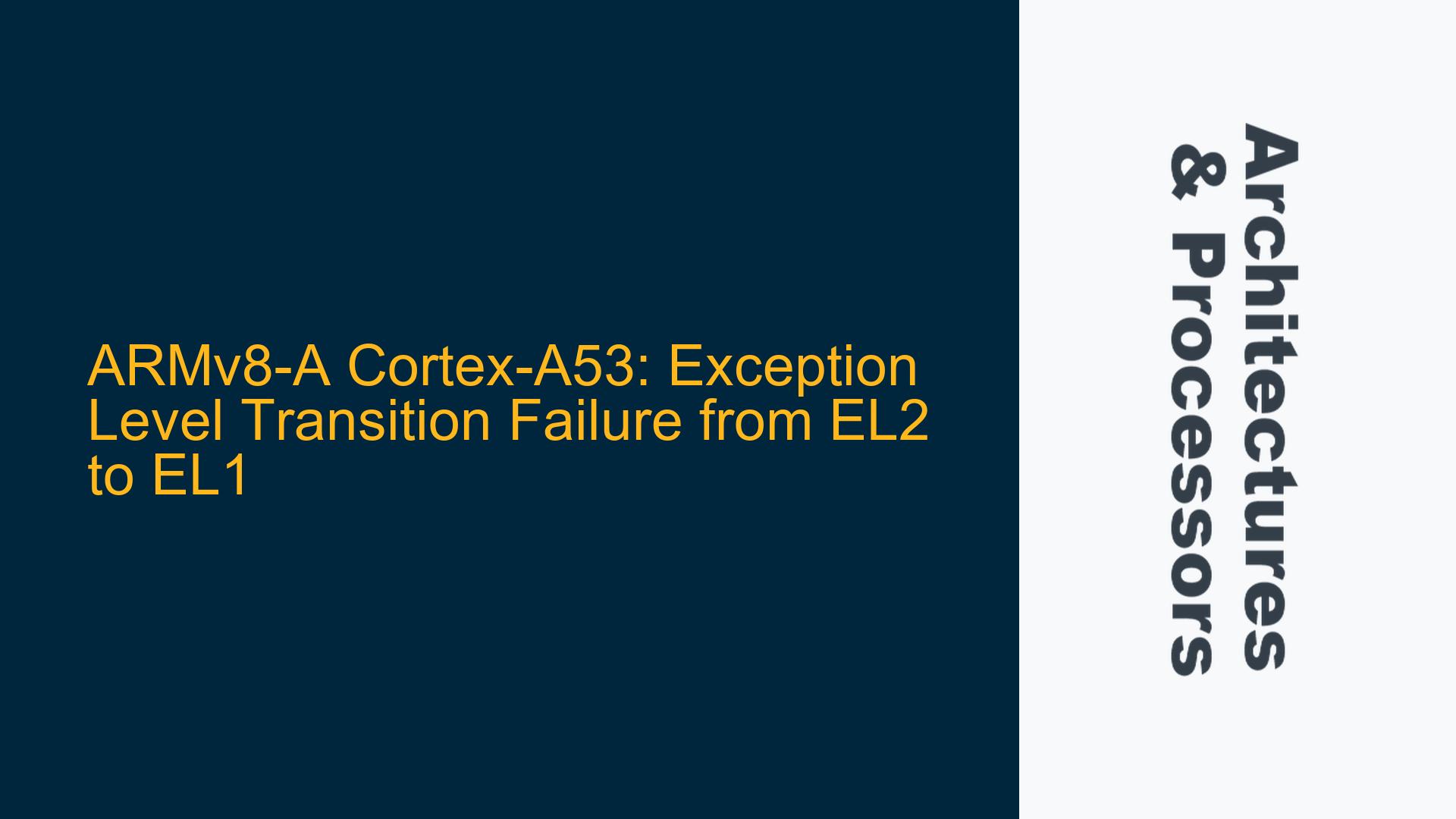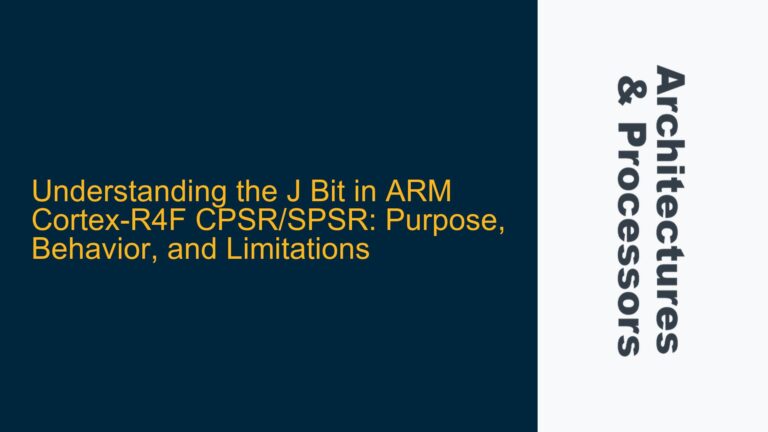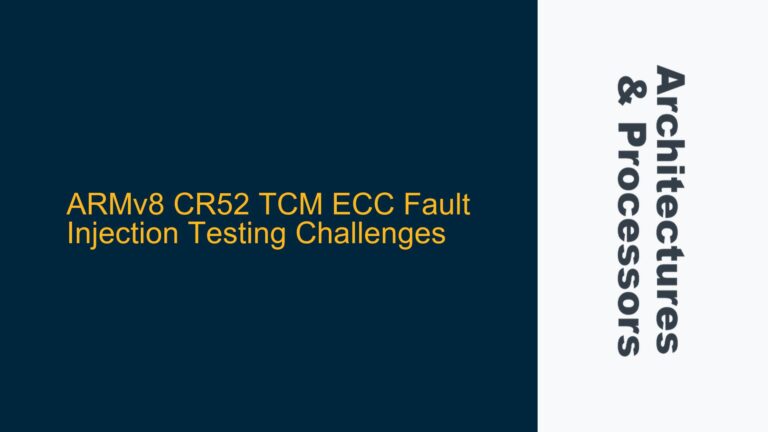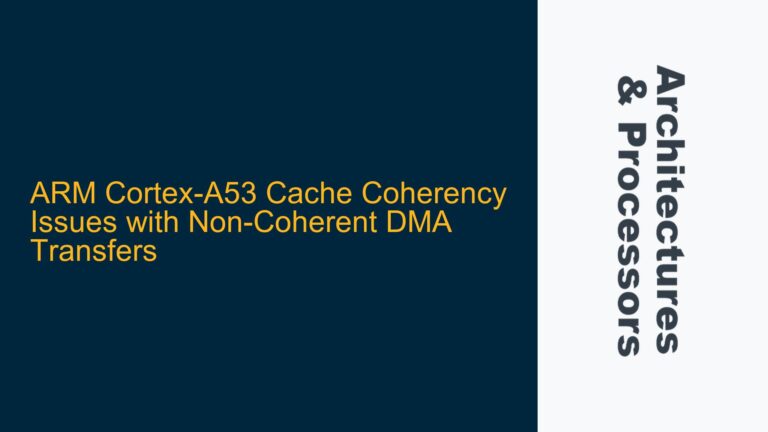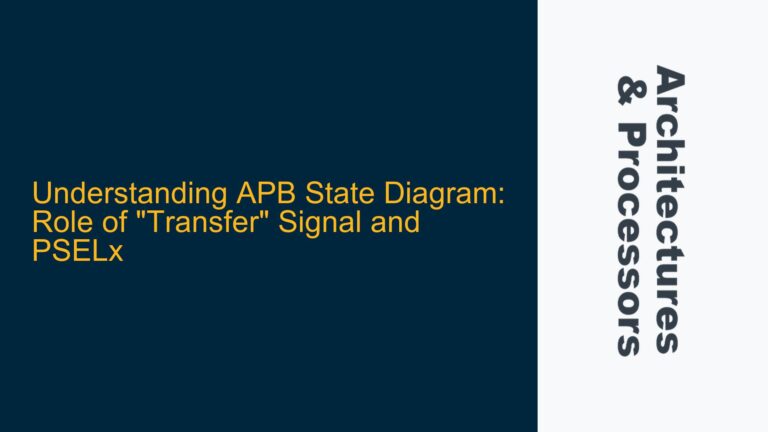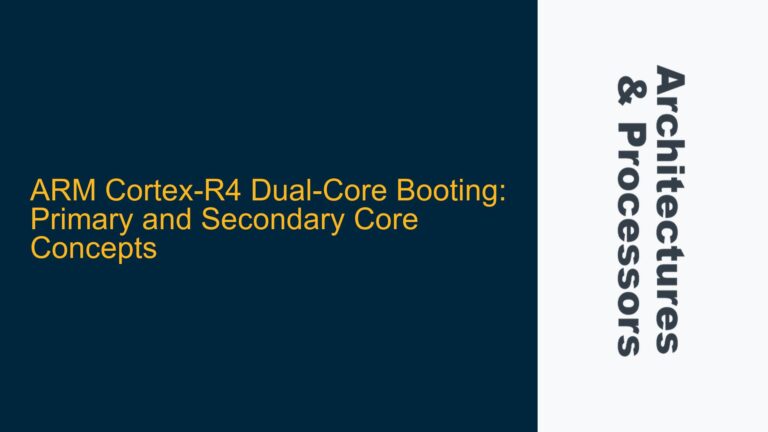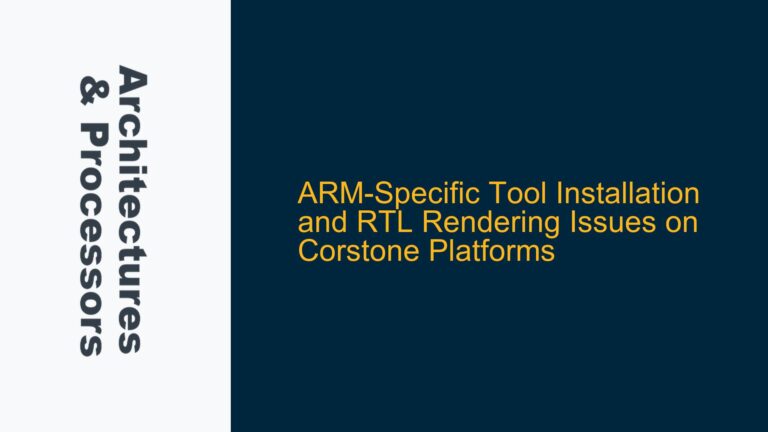ARM Cortex-A53 Exception Level Transition Failure from EL2 to EL1
The ARM Cortex-A53 processor, part of the ARMv8-A architecture, is designed to support multiple exception levels (ELs), which are used to isolate and manage different privilege levels in a system. Exception levels range from EL0 (least privileged, user mode) to EL3 (most privileged, secure monitor mode). Transitioning between these levels is a critical operation, especially during boot processes or when switching between hypervisor (EL2) and kernel (EL1) modes. However, improper configuration during these transitions can lead to system failures, such as the inability to transition from EL2 to EL1, as described in the provided scenario.
In this case, the system starts in EL2, and the goal is to transition to EL1. The user has implemented a macro (arm64_el2_to_el1) to facilitate this transition, but the system fails to execute code after the eret instruction when attempting to switch to EL1. This issue is characterized by the following observations:
- When the
spsr_el2register is set to0x3c8(return to EL2), the transition works, and debug prints (print2,print3,print1) are executed in sequence. - When the
spsr_el2register is set to0x3c4(transition to EL1), onlyprint2andprint3are executed, and the system appears to hang or fail silently after theeretinstruction.
This behavior suggests that the transition to EL1 is not being handled correctly, and the system is unable to continue execution in the lower exception level. The following sections will explore the possible causes of this issue and provide detailed troubleshooting steps and solutions.
Misconfigured Stack Pointer Initialization and SPSR Settings
One of the most common causes of exception level transition failures in ARMv8-A architectures is improper stack pointer initialization and SPSR (Saved Program Status Register) configuration. The SPSR is responsible for storing the processor state (e.g., condition flags, execution state) before an exception is taken, and it is used to restore the state when returning from the exception. Similarly, the stack pointer must be correctly configured for the target exception level to ensure proper execution of code after the transition.
In the provided scenario, the user attempts to set up the stack pointer for EL1 by modifying sp_el0 in EL2. However, this approach is flawed because sp_el0 is specific to EL0 and EL1 when using the SPsel register to select the stack pointer. When transitioning to EL1, the system will use sp_el1 as the stack pointer, not sp_el0. If sp_el1 is not explicitly initialized, the system will attempt to use an invalid or uninitialized stack pointer, leading to undefined behavior or a crash.
Additionally, the SPSR configuration in the provided code may not fully align with the requirements for transitioning to EL1. The spsr_el2 register is set to 0x3c4, which corresponds to the following bitfields:
- Bit 4: M[4] = 1 (EL1h mode, using SP_EL1)
- Bits 3:0: M[3:0] = 0x4 (EL1h mode)
While this configuration is mostly correct, it does not account for other critical bits in the SPSR, such as the interrupt mask bits (e.g., DAIF flags). If these bits are not set appropriately, the system may encounter unexpected exceptions or interrupts after the transition, leading to a failure.
Improper Exception Handling and Cache Configuration
Another potential cause of the transition failure is improper exception handling and cache configuration. The ARMv8-A architecture requires careful management of the exception handling mechanism, including the Exception Link Register (ELR) and the SPSR. The ELR holds the return address for the exception, and the SPSR holds the processor state to be restored. If either of these registers is misconfigured, the system may fail to resume execution correctly after the eret instruction.
In the provided code, the ELR is set to the address of the label 1f, which is correct. However, the SPSR configuration does not explicitly mask interrupts or exceptions, which could lead to unexpected behavior. For example, if an interrupt occurs immediately after the transition to EL1, and the interrupt mask bits in the SPSR are not set, the system may enter an infinite loop or crash.
Additionally, the cache configuration in the provided code may contribute to the issue. The code modifies the sctlr_el1 and sctlr_el2 registers to configure the system control settings, including cache behavior. However, the cache configuration may not be fully synchronized between EL2 and EL1, leading to inconsistencies in memory access behavior. For example, if the data cache is enabled in EL1 but not properly invalidated or cleaned before the transition, the system may encounter stale or corrupted data.
Implementing Correct Stack Initialization and SPSR Configuration
To resolve the exception level transition failure, the following steps should be taken to ensure proper stack initialization and SPSR configuration:
-
Initialize
sp_el1for EL1 Execution:
The stack pointer for EL1 (sp_el1) must be explicitly initialized before transitioning to EL1. This can be done by saving the current stack pointer (sp) in EL2 and assigning it tosp_el1. The modified code should include the following instructions:mov x6, sp msr sp_el1, x6This ensures that EL1 has a valid stack pointer for executing code after the transition.
-
Configure SPSR with Interrupt Masking:
Thespsr_el2register should be configured to mask interrupts and exceptions during the transition to EL1. This can be achieved by setting the DAIF (Debug, SError, IRQ, FIQ) bits in the SPSR. The modified SPSR configuration should look like this:mov x4, #0x3c4 | (0b1111 << 6) // EL1h mode with DAIF masked msr spsr_el2, x4This ensures that interrupts and exceptions are masked during the transition, preventing unexpected behavior.
-
Ensure Proper Cache Configuration:
The cache configuration should be synchronized between EL2 and EL1 to avoid inconsistencies. This can be achieved by invalidating the data cache and ensuring that the cache settings insctlr_el1andsctlr_el2are consistent. The following instructions can be added to the code:dsb sy isbThese instructions ensure that all previous memory operations are completed and the instruction pipeline is flushed before proceeding with the transition.
-
Verify Exception Handling Mechanism:
The exception handling mechanism should be verified to ensure that the ELR and SPSR are correctly configured. The ELR should point to the correct return address, and the SPSR should reflect the desired processor state for EL1. The following code snippet demonstrates the correct configuration:adr x4, 1f msr elr_el2, x4 eret 1:
By implementing these changes, the system should be able to transition from EL2 to EL1 successfully and continue execution without issues. The debug prints (print1, print2, print3) should now execute in sequence, confirming that the transition has been handled correctly.
Conclusion
Transitioning between exception levels in ARMv8-A architectures requires careful attention to stack pointer initialization, SPSR configuration, and cache management. In the provided scenario, the failure to transition from EL2 to EL1 was primarily caused by improper stack pointer initialization and incomplete SPSR configuration. By addressing these issues and ensuring proper exception handling and cache synchronization, the system can successfully transition to EL1 and continue execution as intended. This troubleshooting guide provides a detailed approach to diagnosing and resolving exception level transition failures in ARM Cortex-A53 processors, ensuring reliable and efficient system operation.
